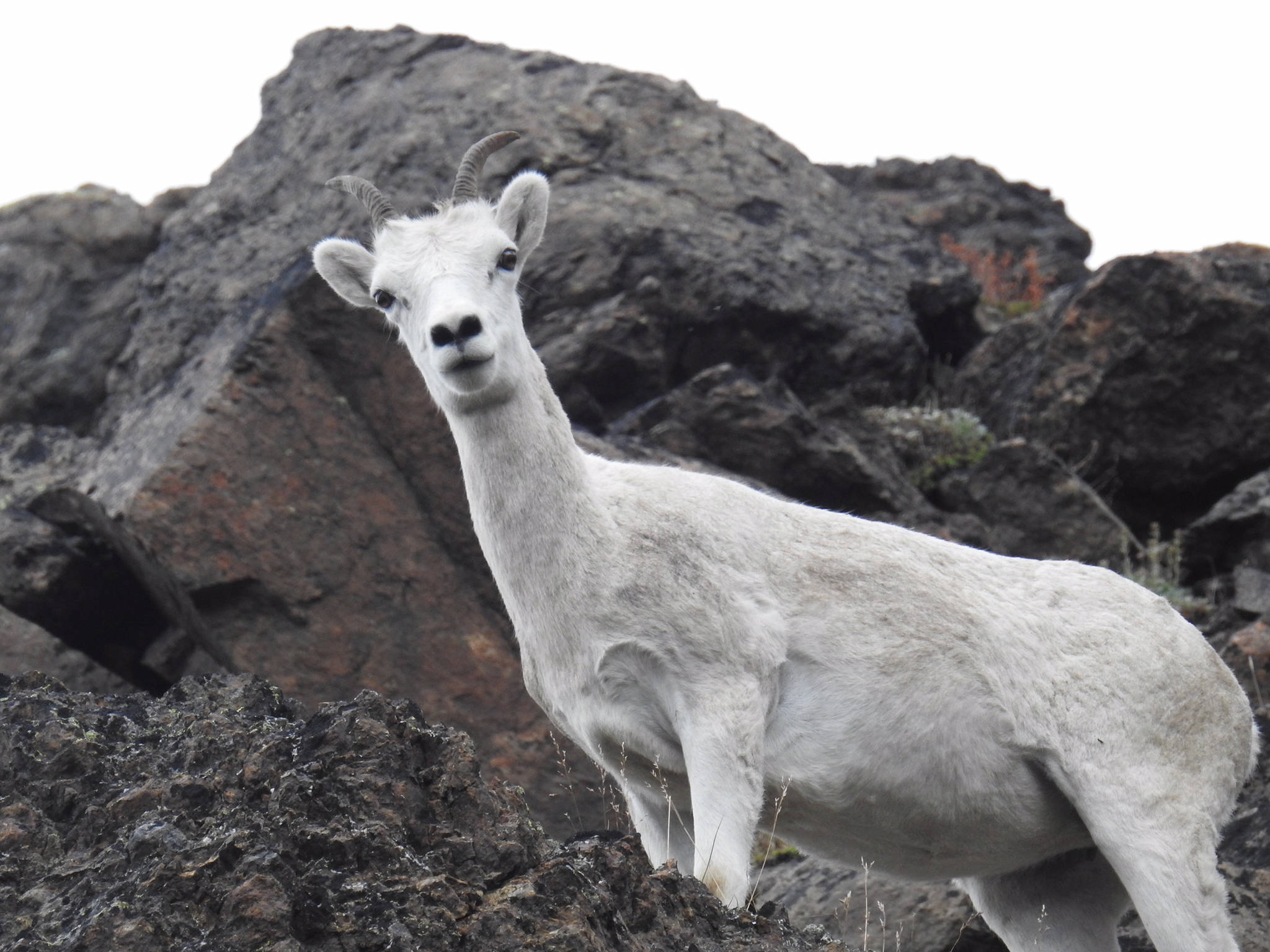As a wildlife field technician, Luke Metherell combines job, hobby and homework on weeklong backpacking trips in the mountains.
A biology student at University of Alaska Anchorage (UAA), Metherell spent most of his summer deep in Chugach State Park, observing and recording Dall sheep behavior for days at a time. He spent so much time with sheep that, by August, he could identify individual personalities among the herd.
“[It’s been] an amazing opportunity as an undergraduate student,” he said.
Employed by the Alaska Department of Fish and Game, Metherell’s research is part of a wider project to find whether climate change is making the Chugach Range less hospitable to Dall sheep. Tom Lohuis of ADF&G and Roman Dial, a biology professor at Alaska Pacific University, started the project in 2009. Metherell is one of three students involved (the others, Tom Day and Kyle Smith, are graduate students at Alaska Pacific University).
So far, the team knows Dall sheep populations are shrinking in Chugach State Park. The population has halved in the past few decades. Lohuis determined nothing abnormal was killing the sheep; there were just fewer being born. Dial, meanwhile, determined that warming temperatures and longer growing seasons allowed vegetation like alders and willows to creep up the mountainside, cutting off the alpine tundra that Dall sheep love to snack on.
The result: malnourished, leaner ewes with less subcutaneous fat and lower odds of carrying a healthy pregnancy. This contrasted with healthy sheep populations elsewhere in the state, where climate change has had a smaller effect on alpine area (like the higher-elevation Alaska Range or the farther-North Brooks Range).
To monitor sheep health, Metherell and his colleagues have to find them first. Occasionally, that means helicopter pursuits at high elevation, firing a net gun through open chopper doors to subdue sheep and collect samples of fur, tissue and blood. On a quieter day, that also means just resting on a peak, waiting for sheep to graze along the ridgelines.
Metherell focuses on the latter. He joined the project in 2015 and built a research project under the guidance of his academic advisor, Jeff Welker. In summers, he heads for the mountains to film sheep and collect samples of the herd’s diet and fecal matter. He’ll either hike in with a heavy pack of camera equipment or get dropped off by a helicopter and remain in the mountains — frequently on his own — for four to 10 days at a time.
“Typically, as an undergraduate student, you don’t have that independence,” he said.
Metherell grew up hunting big game in his home state of Wyoming, but tracking sheep for research was a different experience.
“The major difficulty in doing sheep research is getting close enough to actually observe them,” he noted. “Sheep don’t tend to be in terrain that’s extremely navigable … It’s a lot harder than big-game hunting ever would be.”
For one, Dall sheep are highly mobile. They also traverse steep slopes and remote ridgelines with ease. They bed down at 5,000-foot elevations, even during freezing windstorms, and there aren’t trails to reach their roosts. On top of that, sheep are jumpy critters with, as Metherell stated, “a natural fear of everything.”
After a long season of very patient fieldwork, he’s now in the UAA lab for the winter, analyzing samples safe from the dust, rain and distractions of the field. Primarily, he’s examining the carbon-nitrogen ratio — what he calls the “chemistry cocktails” — of plants in the Dall sheep diet through a process called stable isotope analysis.
All biological matter has a unique stable isotope signature that can identify its location. A plant absorbs isotopes from the soil, and when a sheep eats that plant, those isotopes are absorbed again. By examining stable isotopes — which occur naturally and have long half-lives of decay — Metherell can record what sheep are eating today, then see how it differs from diets of past Dall sheep.
“[We can] look at composition in any natural substance and get the fingerprint for that substance, no matter where that substance ends up,” he explained. “It’s essentially a way for us to time travel.”
Though the data analysis is central to Metherell’s nutrition study, his video footage irrefutably fills in a few blanks. For one, thanks to his recordings, he now knows Dall sheep forage for mushrooms. That’s unsurprising given the behavior of similar species, he noted, but it had never been documented in the Chugach herds before.
Discoveries like that have made his project meaningful, both personally and professionally.
“I get to travel to amazing places and I get to see the most beautiful parts of Chugach State Park. And I get to work I with incredible animals,” Metherell said of his summer. “As frustrating as they can be, [Dall sheep] are as rugged as they are beautiful.”
Even when he’s indoors, the chance to research Dall sheep nutrition and health continues to provide an unmatchable experience.
“Having this on my résumé, it gives me field experience, it gives me lab experience, and I’m building serious connections with major agencies in the state,” he said. “It’s an incredible opportunity.”
This is a weekly news feature provided by the University of Alaska.

